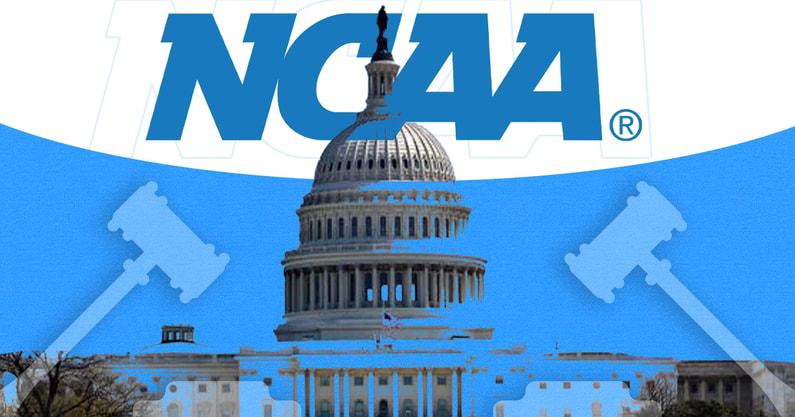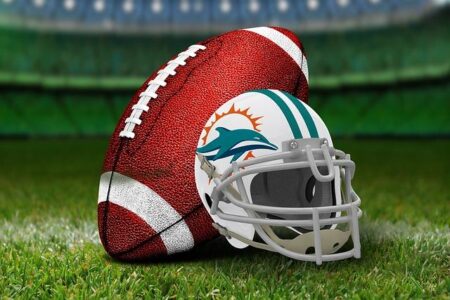The recent NCAA settlement, intended to address long-standing issues around athlete compensation, is sending shockwaves beyond the headline-grabbing revenue sports. Olympic and non-revenue programs now find themselves on precarious ground, facing renewed financial uncertainty and potential cuts as collegiate athletic departments scramble to adjust budgets. This unintended fallout raises urgent questions about the future viability of less-publicized sports and the broader impact on the college athletic landscape.
NCAA Settlement Fallout Threatens Funding for Olympic and Non-Revenue Sports
As the NCAA settlement reshapes the collegiate sports landscape, the financial repercussions are rippling far beyond the headline-grabbing football and basketball programs. Olympic and non-revenue sports, long reliant on cross-subsidization from major sports, now find themselves facing severe budget cuts. Institutions are grappling with the need to balance compliance costs and compensation mandates against finite athletic department budgets, putting disciplines like swimming, wrestling, and gymnastics under unprecedented strain. Athletic directors warn that without fresh funding streams, some of these programs could face elimination, disrupting athlete development pipelines and diminishing the diversity of college athletics.
Many schools are already reassessing their spending priorities, which threatens the viability of less commercially lucrative sports. Below is a snapshot of how average athletics budgets may shift post-settlement:
| Sport Category | Pre-Settlement Avg. Budget | Projected Post-Settlement Budget Cut | Risk Level |
|---|---|---|---|
| Football & Men’s Basketball | $45M | 5% | Low |
| Olympic Sports | $7M | 20%-30% | High |
| Non-Revenue Sports | $3M | 25%-40% | Severe |
- Scholarship reductions: Non-revenue sports may see decreased athlete scholarships, impacting recruitment.
- Staff furloughs and program cuts: Layoffs and program eliminations are increasingly discussed as cost-saving measures.
- Facility maintenance delays: Deferred upkeep could further degrade training environments.
Universities Grapple with Budget Reallocations Amid Rising Compliance Costs
Universities nationwide are facing tough financial decisions as escalating compliance costs tied to the NCAA settlement force administrations to rethink budget priorities. Departments that once flourished, especially Olympic and non-revenue sports, are now at risk of receiving diminished funding, as institutions redirect resources toward legal, administrative, and monitoring expenses mandated by new regulatory frameworks. This shift is causing a palpable strain, with athletic directors warning that the long-term vitality of less commercially visible sports is increasingly uncertain.
Key budgetary impacts include:
- Increased spending on compliance staff and technology
- Reduced scholarships and travel budgets for non-revenue teams
- Postponed facility upgrades and equipment purchases
| Sport | Pre-Settlement Budget ($M) | Projected Post-Settlement Budget ($M) | Change (%) |
|---|---|---|---|
| Men’s Wrestling | 1.2 | 0.8 | -33% |
| Women’s Rowing | 1.5 | 1.1 | -27% |
| Men’s Fencing | 0.9 | 0.6 | -33% |
| Women’s Gymnastics | 1.3 | 1.0 | -23% |
Athlete Compensation and Its Ripple Effect on Lesser-Known Collegiate Programs
As the new landscape of athlete compensation takes shape, lesser-known collegiate programs are bearing an unintended burden. Olympic and non-revenue sports, frequently overshadowed by football and basketball, face unprecedented financial strain as universities redistribute limited resources to cover Name, Image, and Likeness (NIL) payouts and compliance costs. This shift threatens to disrupt decades of program stability, forcing athletic departments to make tough choices-often scaling back support, reducing scholarships, or, in extreme cases, eliminating teams altogether.
The ripple effects extend beyond budget line items. A closer look at recent funding reallocations reveals a stark contrast in financial support:
| Sport Type | Annual Budget Change (%) | Scholarship Impact |
|---|---|---|
| Revenue Sports (FB, BB) | +12% | Stable or Increased |
| Non-Revenue Olympic Sports | -18% | Reduced |
| Other Collegiate Teams | -10% | Often Eliminated |
University administrators express concern that the growing pay gap could lead to fewer opportunities for student-athletes in disciplines critical to Olympic development programs. Meanwhile, coaches and athletes in these underfunded sports are mobilizing, calling for more equitable resource distribution that protects the breadth of collegiate athletics.
- Smaller programs lack the marketability to attract lucrative NIL deals
- Compliance and administrative costs disproportionately affect low-revenue sports
- Potential long-term decline in athletic diversity and Olympic pipeline strength
Strategic Solutions for Sustaining Olympic and Non-Revenue Sports Post-Settlement
Amid the financial strain imposed by the NCAA settlement, institutions are compelled to explore innovative approaches to preserve Olympic and non-revenue sports programs. Strategic partnerships with local and national sponsorships can provide critical funding streams while elevating community engagement. Leveraging digital platforms for fan interaction and crowdfunding campaigns presents an untapped wealth of resource potential. Universities must also consider shared services models, such as pooling resources across departments or collaborating with neighboring schools to reduce operational costs without sacrificing athlete support.
In addition, re-examining budget allocations through a data-driven lens enables athletic departments to pinpoint inefficiencies and redirect resources more effectively. A balanced focus on athlete academic success and career development can also attract support from alumni networks and grants dedicated to student advancement. The following table highlights practical strategic levers that institutions can deploy to stabilize their Olympic and non-revenue sports ecosystems:
| Strategic Lever | Description | Expected Impact |
|---|---|---|
| Corporate Sponsorships | Secure funding from brands aligned with sport values | Increased financial stability |
| Digital Fundraising | Utilize social media and crowdfunding platforms | Expanded donor base and fan involvement |
| Shared Resource Agreements | Collaborate with other institutions to share costs | Reduced operational expenditures |
| Athlete Career Programs | Offer education and career services to athletes | Enhanced alumni engagement and funding |
Insights and Conclusions
As the NCAA navigates the fallout from its recent settlement, the future of Olympic and non-revenue sports hangs in precarious balance. While the agreement aims to address longstanding compensation issues for student-athletes, its unintended consequences threaten limited-resource programs already struggling for survival. Stakeholders across collegiate athletics face a critical juncture, where preserving the diversity and integrity of college sports demands careful balancing of financial realities and athlete welfare. The coming months will be pivotal in determining whether these disciplines can weather the storm or become the next casualties in a rapidly evolving landscape.





